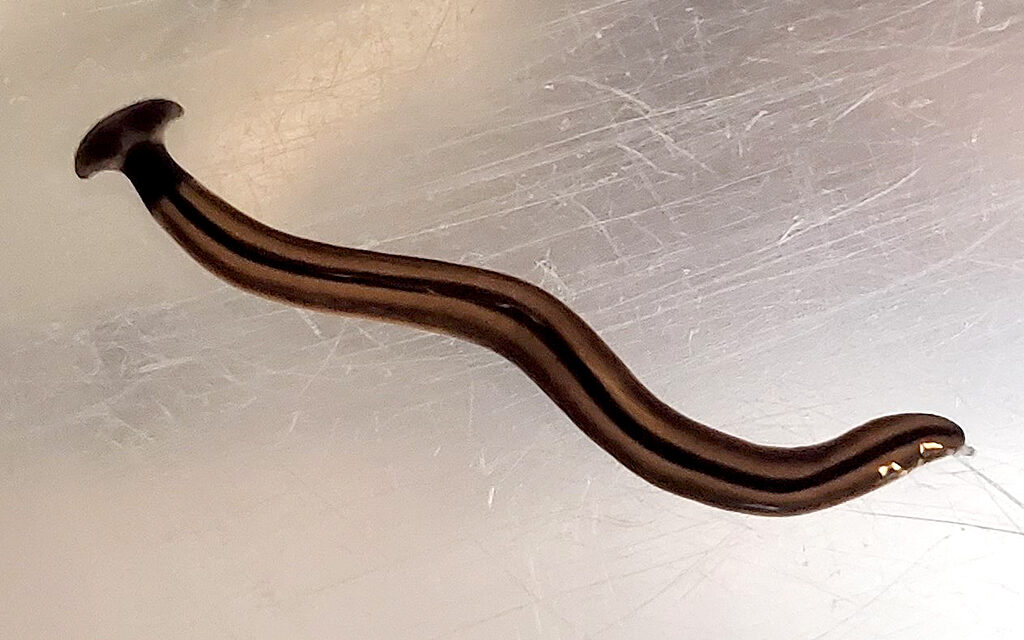by John Jefferson
There are numerous Internet sites for the subject of this week’s column.
But I polled friends. Only two people had ever heard of the critter. A Ph.D. big game authority knew nothing of this invertebrate.
Of the two that were aware of them, both are financial industry professionals. Renowned in their field, they’re not wildlife experts. One of them had actually seen the critter but couldn’t remember where. So, does this mean they’re insignificant and unworthy of your reading efforts?
Not hardly. At the rate their population is spreading and the fact that they readily regenerate after being slashed into two or more parts by a hoe or other garden tool makes them newsworthy. PLUS -they can hurt ya!
I’m speaking of the Hammerhead Worm (AKA Hammerhead Slug). Regardless of which name you prefer, all of these worm-like beasts appear long and slender and have a head somewhat resembling a hammer. Or — to refer to something more are familiar with – its head resembles the hammerhead shark’s head in shape, but much smaller and with considerably less fright inducement. If you ever encounter this slug, you probably won’t run for your life like I did on an early life hammerhead shark encounter.
Some Internet literature calls them slugs and says hammerheads have a slime on their body that causes pain if you pick it up barehanded. I’m not sure why anyone would, but some strange folks do. My two grown sons would have at earlier ages – like the night they caught a two-foot-long rat snake that I thought they had released until just as I turned onto a busy highway one Sunday evening. But that’s another story.
Hammerheads primarily prefer hot, humid climates with soft soil and often appear after rainfall. They’re already in southeast and central Texas. These short, snake-like worms are described as being honey-colored with dark stripes running down their bodies, although they can occur in other colorations. Their heads are the same, regardless. They’re said to grow to about fifteen inches long. They don’t bite but handling them can hurt. If you’ve ever picked up a snail (also called a slug), you know what their slime is like. But slug’s slime doesn’t sting.
Hammerhead’s does. And can be plenty painful!
They live in the ground and eat earthworms and other insects. Earthworms work the soil and are considered useful, making hammerheads generally unpopular. Besides that, earthworms are valuable as fish bait!
Killing hammerheads involves a little work. If you cut one’s head off, in about ten days, it could regenerate into two hammerhead worms.
That leads to population growth. Putting them into plastic bags containing vinegar and water, sealing it, and keeping them overnight in your freezer, though, kills them.
Are they edible? Army survival courses say a hungry man could stomach things he normally wouldn’t dine upon – like pond scum soup!
You’d do it to survive. Most would draw the line with hammerheads, however. That toxic slime is dangerous. And, other protein is available in Nature.
JJ





